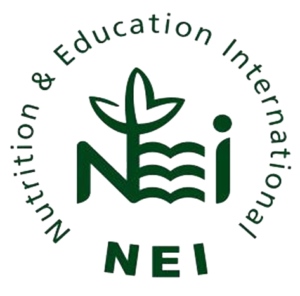 According to research from the United Nations World Food Programme (WFP), malnutrition is a major problem in Afghanistan. Approximately one-third of the country’s population isn’t getting enough calories on a daily basis, and about 20% of Afghans aren’t getting enough protein. The figures for malnutrition in children are even more troubling: more than 40% of Afghan children under five years old are stunted (or smaller than the average for their age), which is one of the world’s highest rates of childhood stunting. In addition, 10% of Afghan children are acutely malnourished, and thousands of children die every year because they don’t have access to adequate food and nutrition.
According to research from the United Nations World Food Programme (WFP), malnutrition is a major problem in Afghanistan. Approximately one-third of the country’s population isn’t getting enough calories on a daily basis, and about 20% of Afghans aren’t getting enough protein. The figures for malnutrition in children are even more troubling: more than 40% of Afghan children under five years old are stunted (or smaller than the average for their age), which is one of the world’s highest rates of childhood stunting. In addition, 10% of Afghan children are acutely malnourished, and thousands of children die every year because they don’t have access to adequate food and nutrition.
Childhood malnutrition naturally has serious consequences for physical development, but it can also lead to problems with cognitive development and educational achievement. Without the nutrients needed for healthy brain development and functioning, many malnourished children struggle with learning issues throughout their lives, even into adulthood. This is a particular challenge for a country like Afghanistan, which is working hard to increase literacy rates and education levels as part of its post-conflict rebuilding process.
With child health experts calling for greater nutritional investment in Afghanistan, a number of NGOs are stepping in to help tackle malnutrition and the underlying causes of Afghanistan’s food insecurity. Nutrition & Education International (NEI) is one such example: a non-profit organization that is working to promote soybean cultivation and nourishment in Afghanistan in association with local government agencies, universities, and the WFP. Read on to learn more about NEI’s work and its history in Afghanistan.
What is NEI?
 NEI is a non-profit organization on a mission to eradicate malnutrition in Afghanistan with a surprising weapon: soybeans.
NEI is a non-profit organization on a mission to eradicate malnutrition in Afghanistan with a surprising weapon: soybeans.
Containing nine essential amino acids, soybeans are a rich source of protein and other nutrients, making them excellent fighters against malnutrition, which is essentially synonymous with protein deficiency. In addition, soybeans are a cost-effective crop to grow, and so are relatively easy to incorporate into Afghanistan’s agricultural practices.
NEI’s primary objective is to help Afghanistan establish a self-sustaining soybean industry by developing a full soybean value chain. The idea is that by introducing seed multiplication, soybean cultivation and processing, and soy market development, NEI can help poor families improve both their nutrition and their economic circumstances. According to NEI’s president, Steven Kwon, a functioning soy economy is one of the most practical remedies to address Afghanistan’s ongoing struggle with chronic malnutrition.
A history of NEI in Afghanistan
2003—Steven Kwon makes his first visit to Afghanistan. Soon after, he develops the soy nutrition initiative and establishes Nutrition & Education International as a non-profit NGO.
2004—Six varieties of non-GMO soybeans are successfully cultivated and tested in Afghanistan’s Balkh province.
2005—Following the successful testing of NEI’s soy program in 12 different Afghan provinces, the government of Afghanistan adopts the program as a national project.
2006—For the first time in Afghanistan’s history, 1,000 tons of soybeans are produced through the efforts of more than 2,000 Afghan farmers across nine provinces. In addition, two soy milk processing facilities are established, and NEI begins its humanitarian soy milk distribution program, which delivers nutrition-rich soy milk to 3,000 high-risk families.
2007—Soybean production expands; more than 3,000 farmers across 15 provinces are now cultivating soybeans.
2008—Three more soy milk processing facilities are established, as is a containerized soy flour factory.
2009—Soybean production expands beyond agricultural operations to include home and community gardens, thus helping individual families and small communities supplement their protein intake independently. NEI’s soy milk distribution program is now reaching 5,000 families, and a newly initiated winter soy nutrition campaign provides 100 tons of soybeans and soy flour to 2,500 high-risk families in Afghanistan’s eastern provinces.
2010—NEI purchases and distributes 100 metric tons of soybean seeds to farmers in 21 provinces; by this time, Afghan farmers are producing enough soybeans to sustain their own families. Afghanistan’s first-ever soy flour factory is built in Kabul with a capacity of 300 metric tons. NEI also increases its efforts to create a soy market in the country by launching its business arm, Soybean Nutrition Services Afghanistan (SNSA), and concentrates on providing seed resources, training farmers, and further developing the market for soy. A grant from the government of Japan enables NEI to pursue these aims.
2011—Three more soy flour factories are built, and NEI receives a second grant for its soybean production project from the Japanese government.
2012—NEI enters into a partnership with the United Nations World Food Programme to promote soybean cultivation in 100 districts across 20 provinces. More than 6,000 new farmers are trained in soybean cultivation, and 2,000 metric tons of soybeans are produced.
2013—NEI celebrates a decade of work in Afghanistan, and commits to a further 10 years of developing Afghanistan’s soybean industry in order to eradicate malnutrition.
2014—Two more soy processing facilities are established. NEI receives a grant for its work from the Republic of Korea.
2015—NEI’s founder meets formally with the President of Afghanistan to discuss the future of Afghanistan’s soybean industry.
2016—Construction on a sterilized soy milk factory is completed. 17,000 new soybean farmers are trained in 31 provinces, and soybean production reaches a record high of 6,000 metric tons.
